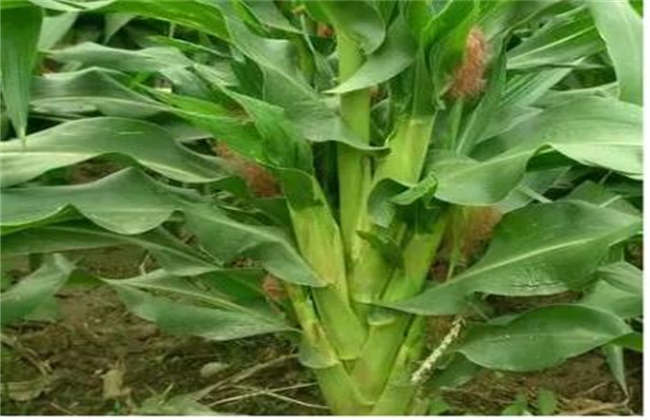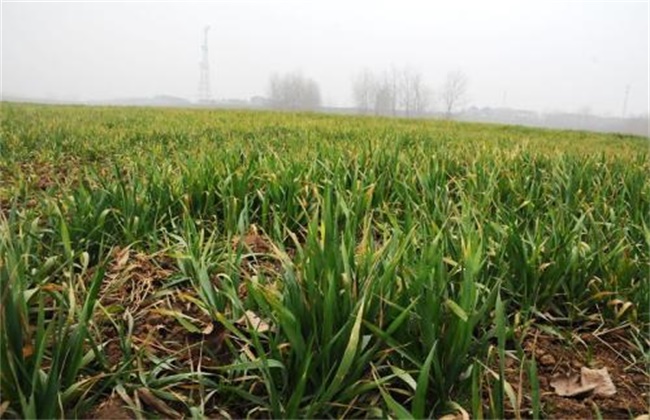Causes and Preventive measures of Grain deficiency at bald Tip of Corn
The phenomenon of empty stalk, lack of grain and bald tip appeared in the process of corn planting, which you call common, this phenomenon will directly affect the yield of corn, perennial farmers react this year, the phenomenon of bald tip and grain deficiency in corn is more serious, the yield reduction of corn is more serious, so what is the reason for the bald tip and grain deficiency of corn? Let's take a look.

1. Corn bald tip lack of grain nutrition
1. The reason of variety. The varieties chosen for planting are not suitable for the local climatic conditions, and the phenomenon of bald tip and grain deficiency is very easy to occur.
2. Improper soil. When planted on the soil with high salinity, low-lying and easy waterlogging, shallow tillage layer, poor water storage and fertilizer conservation capacity and barren soil, the bald tip and grain deficiency of corn will also occur seriously.
3. Nutrition. In fertilization, due to the improper combination of nitrogen, phosphorus and potassium, many or less application of organic fertilizer and micro-fertilizer, especially in the lack of phosphate and boron fertilizer in the soil, or the lack of water in the middle and later growth, de-fertilization and other problems, will cause bald tip lack of grain.
4. Climate. Continuous drought in the middle growth period of corn, resulting in many leaf curls, or in high temperature and dry weather during flowering, insufficient soil water supply will affect the development of corn ears. Or when the corn is scattered, the continuous overcast and rainy weather will affect the normal flowering and pollination, which will cause baldness and lack of grains.
5. Diseases and insect pests are serious. The occurrence of various leaf spots in corn, or the occurrence of maize seedling blight, sheath blight and stem rot will affect the normal growth and development of corn, resulting in poor growth of corn and lack of grains at the bald tip.
II. Preventive measures
The main results are as follows: 1. When planting excellent maize varieties, the baldness phenomenon of hard grain varieties is slighter than that of horse-toothed varieties.
2. Improve the soil and enhance the ability of soil water and fertilizer conservation.
3. For rational fertilization, it is necessary to increase the application of organic fertilizer and mix nitrogen, phosphorus and potassium fertilizer reasonably, especially to prevent water shortage, phosphate fertilizer and boron fertilizer in the field, and to prevent both drought and waterlogging in the water supply. After the jointing stage of corn, the amount of water should be timely and appropriate to promote the development of carved ears.
4. To strengthen cultivation and management, first of all, reasonable close planting, and then strengthening ploughing, weeding and soil cultivation in time, especially soil cultivation after jointing stage, can enhance soil permeability and promote the development of maize root system. In addition, wide and narrow row planting technology can be adopted to improve the ventilation and light transmission conditions in the field, and artificial pollination technology can be adopted when maize pollination is poor.
5. For the prevention and control of diseases and insect pests, it is usually necessary to inspect the fields, and once diseases and insect pests are found, they should be prevented and controlled in time to avoid further spread.
The above is the introduction of the causes and preventive measures of grain deficiency at the bald tip of corn. I hope it can help you. If you want to know more about it, please follow us.
Related
- The first cup of black tea in spring, the flavor and history of tea gardens in Kenya, Africa
- The computer can not only choose potatoes, but also grow tea rice. AI will grow winter oolong tea champion.
- It is not only the inflated tea bitten by insects, but also engraved with the four seasons tea in Beipu.
- The Oriental Beauty Tea Festival in Zhuxian County takes the stage at the weekend to experience the plus-size feast of oil tea.
- & quot; Oriental Beauty Tea & Exploration of Emei in Hsinchu, the hometown of quot;
- The new variety of strawberry "Tainong 1" dessert is the first choice with mellow aroma. Crimson gorgeous
- History of Tea in Taiwan: from Wild Inner Mountain to Export Tea Garden
- Two types of Taiwan Oriental Beauty Black Tea won the British three-Star Award for Childhood Tea Xiang Zhang Jiaqi changed from pilot to champion tea maker.
- Banana species and varieties: the planting history of Taiwan Xianren banana and dwarf banana is long, is banana disease resistant?
- Coffee planting Technology: Qianjie Coffee from Seedling to harvesting



